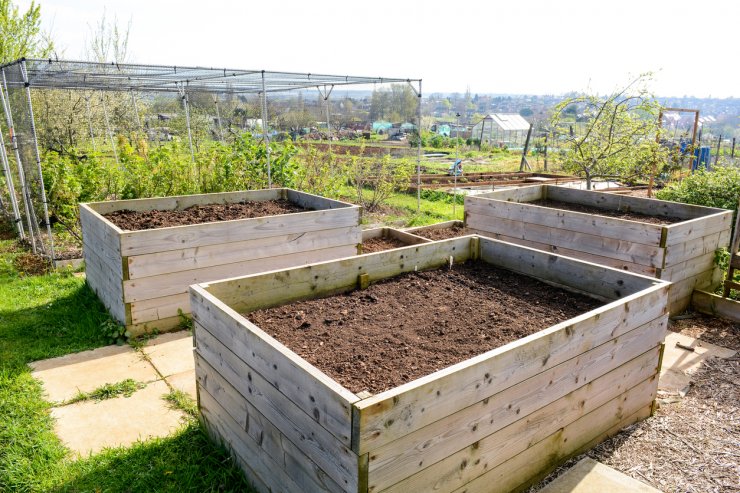
A large, elevated raised bed for easy access—perfect for watermelons!
An above ground garden is one of my favorite recommendations for folks who want to start gardening but aren’t sure where to begin. For one thing, gardening can be tricky if you don’t have the right space for it and some folks don’t have a large yard to work with. Others may have poor soil quality on their property. Many people have mobility issues preventing them from getting on their hands and knees, and still others can’t keep up with the weeds and pests pervasive at the ground level.
An above ground garden removes all of those obstacles and is a great option for home-grown fruits and vegetables. There are so many crop combinations to choose from. Here are some tips for preparing an above ground garden and strategies for effective weed control.
Discover 7 top tips for growing, harvesting, and enjoying tomatoes from your home garden—when you access the FREE guide The Best Way to Grow Tomatoes, right now!
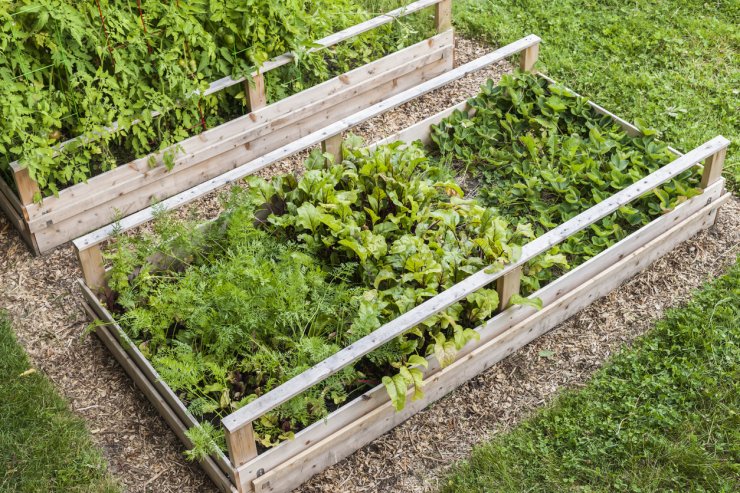
Raised garden bed
Build, Buy, or Both!
I’m one of those people who feels confident enough to put something together if you give me instructions and materials, so for me, I like the DIY kits you can buy at home and garden stores. But there are options on both sides of the spectrum from using found material in your yard (like stone and pressure treated lumber) to ordering something completely prefabricated. The key is to use water-resistant and rot-resistant materials.
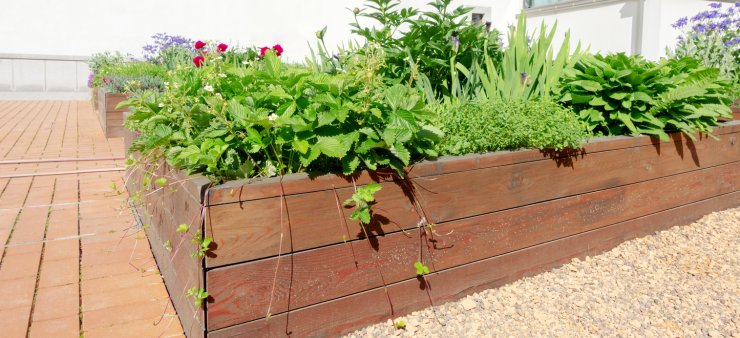
Place raised beds in a sunny area of your property
Location: Sun, Wind, and Water
Most vegetables need lots of sunlight, so it’s important to build your above ground garden in a sun-soaked area of your yard. Wind can be a real threat to raised beds, so building your above ground garden next to a house or fence will go a long way in protecting your veggies from harsh winds. You’ll want to be close enough to a water source to make regular waterings easy to do, but you don’t want to be too close to downspouts or other rain run-off areas that will make your garden too soggy.
Weed Control
Once you’ve planned and prepared your above ground garden, it’s time to focus on weed control. Here are a few of my favorite strategies.
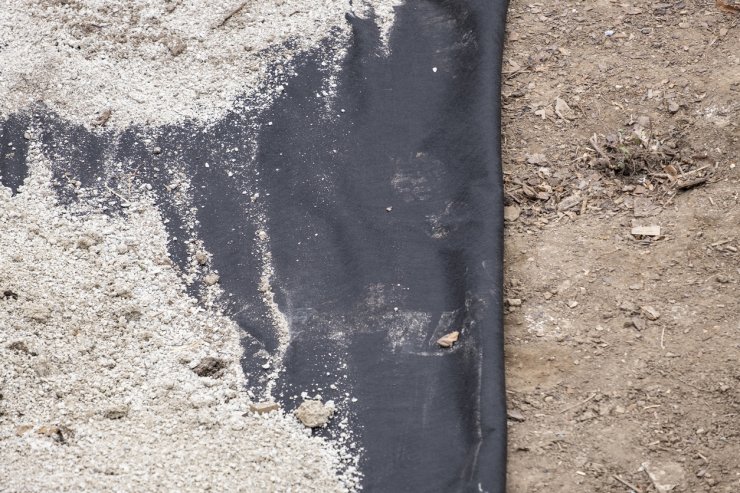
Landscaping fabric acts as a soil barrier.
Install a soil barrier.
Line the bottom of your above ground garden with landscape fabric or newspaper and cardboard. Landscaping fabric will last a few years or until it is dug up.
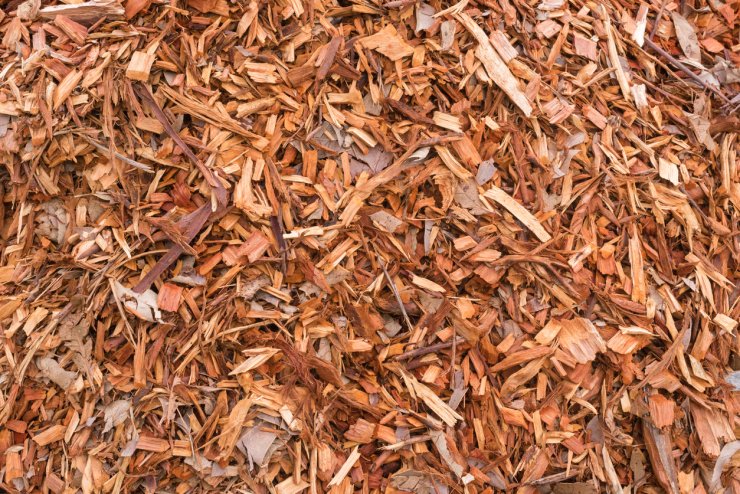
Mulch for the raised beds.
Use mulch.
Mulch can come in many forms, including wood chips, pebbles, grass clippings and straw. Two to three inches is best and the type of mulch used depends on the type of crop you plant.
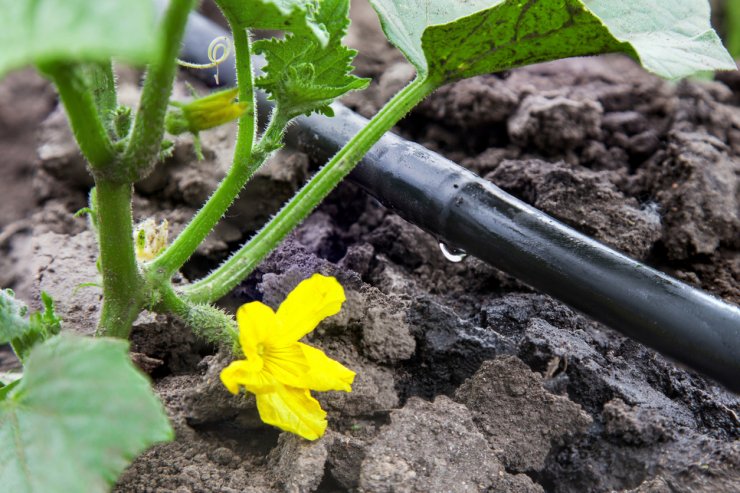
Drip irrigation system
Consider drip irrigation.
Stop weeds from growing by cutting off their water supplies. Rather than watering your garden by spraying the surface, set up a drip irrigation system that will get water to your crops and not to the surface weeds.
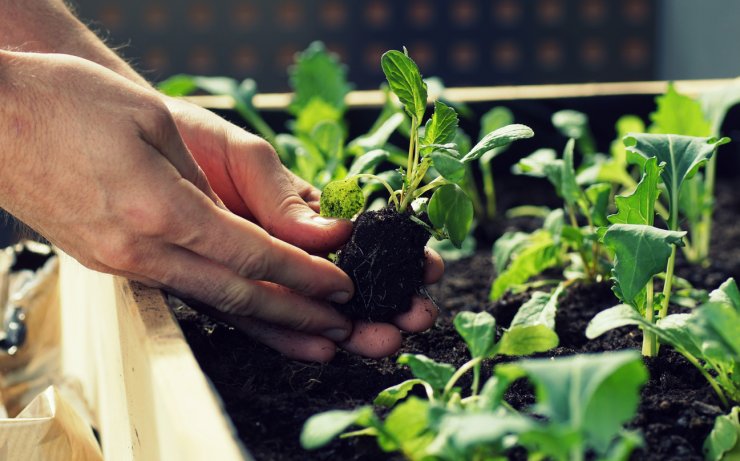
Crops can be spaced closer together in raised beds than in open land.
Reduce crop spacing.
Keeping some of your crops close together can prevent weeds from having space to grow. It’s a delicate balance, though, and you have to avoid overcrowding certain vegetables.
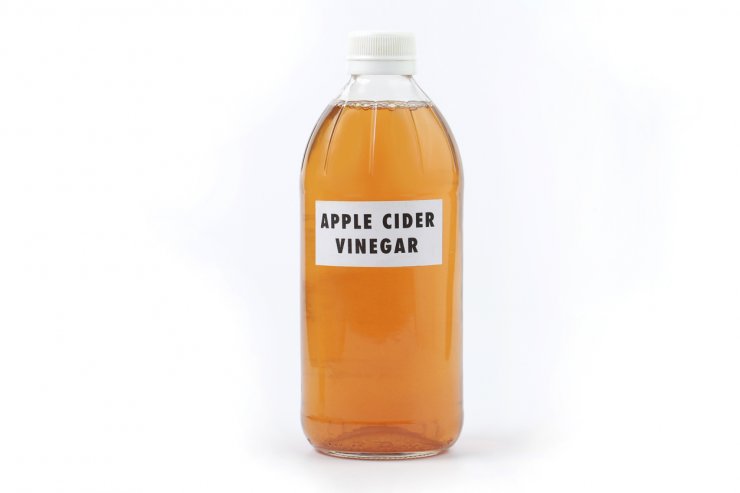
Vinegar will work as a weed killer.
Use a simple, non-toxic weed killer like vinegar.
You can use household vinegar or gardening vinegar (a bit more acidic) to spray onto weeds to kill them. It’s important to only spray weeds with vinegar as it will also kill your vegetable crops if you’re not careful.
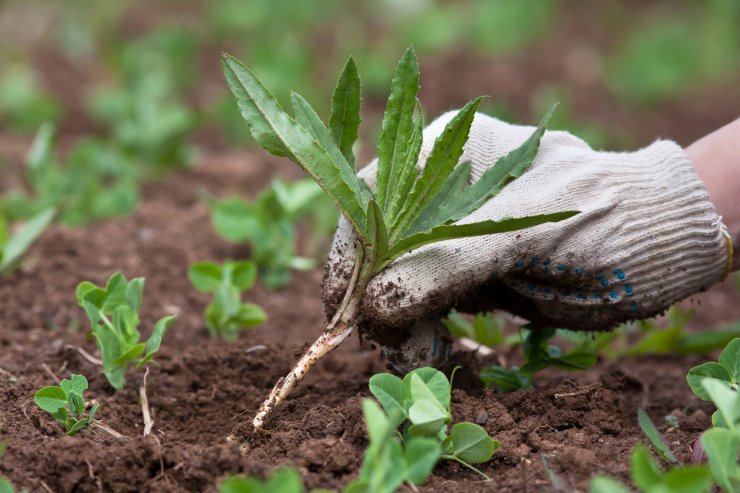
Weeds can occur even in raised beds. Spend time removing weeds each day to prevent spread.
Spend a few minutes a day plucking the early weeds.
I know it’s easy to say, but I promise, if you can commit five to ten minutes a day, you’ll be in the best position to stop weeds before they become pervasive. And that will save you a ton of time in the long run.
What is your favorite crop to plant in your above ground garden? I’d love to hear about your raised garden beds, and any tricks you’ve used for weed prevention.
Discover 7 top tips for growing, harvesting, and enjoying tomatoes from your home garden—when you access the FREE guide The Best Way to Grow Tomatoes, right now!





This is a great and very informative article, thank you Amanda! I’ve needed waist-high raised beds for years because I can’t bend and I’m still dreaming to have just one 4′ x 8′ bed out front where I can easily get to it. But I would have to buy a load of good topsoil and have someone do the backfilling for me, so you can see, that for my purposes it would be difficult and costly. Boo hoo! On a happy note, I am content-almost-to do my growing indoors with hydroponic tanks! One unit planted entirely with Bok Choy gives a bounty you wouldn’t expect. Great article!
Landscape fabric is made of plastics. I’ve called, even the “eco” ones and still they are plastic. So, please do not recommend them unless you can find a source that it not toxic.
Do I have to clean out the raised bed dirt every year or can I add or mix nutrient dirt every year?
No, each year you can add a new layer of compost/manure/soil/amendments. 🙂
If moles invade try planting a couple castor bean plants. You need to remember that the beans are poisonous, but the castor does discourage the moles. On top of that, the castor takes little care (very hardy for us in zone 6b) and is quite attractive — tall with bold leaves and red stems.
I have 2 4×8 ft. raised beds. Every year I grow a cover crop in the fall/winter. Usually wheat, this year I mixed in some barley. Then in late February I cover the entire bed with landscape fabric to kill the cover. I leave it on all growing season and cut holes for my plants. I get zero weeds. My drip irrigation lays on top and waters through the fabric. As an added bonus, I give the tomatoes a good shake every day or two and get a surprising number of tomato warms to fall out. They are easy to see and collect for the bird feeders.
A pest-proof fence is the best way to keep pest who can reach the plants from above. Depending on the configuation, enclose either your entire raised bed area or each individual bed. If you have burrowing pest the best prevention is to line your bed with chicken wire or critter-proof mesh netting.
What is a good way to keep animals from eating plants from the above ground garden?